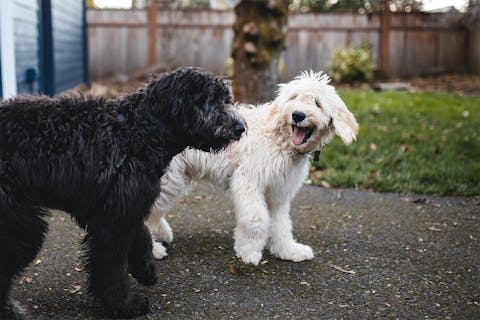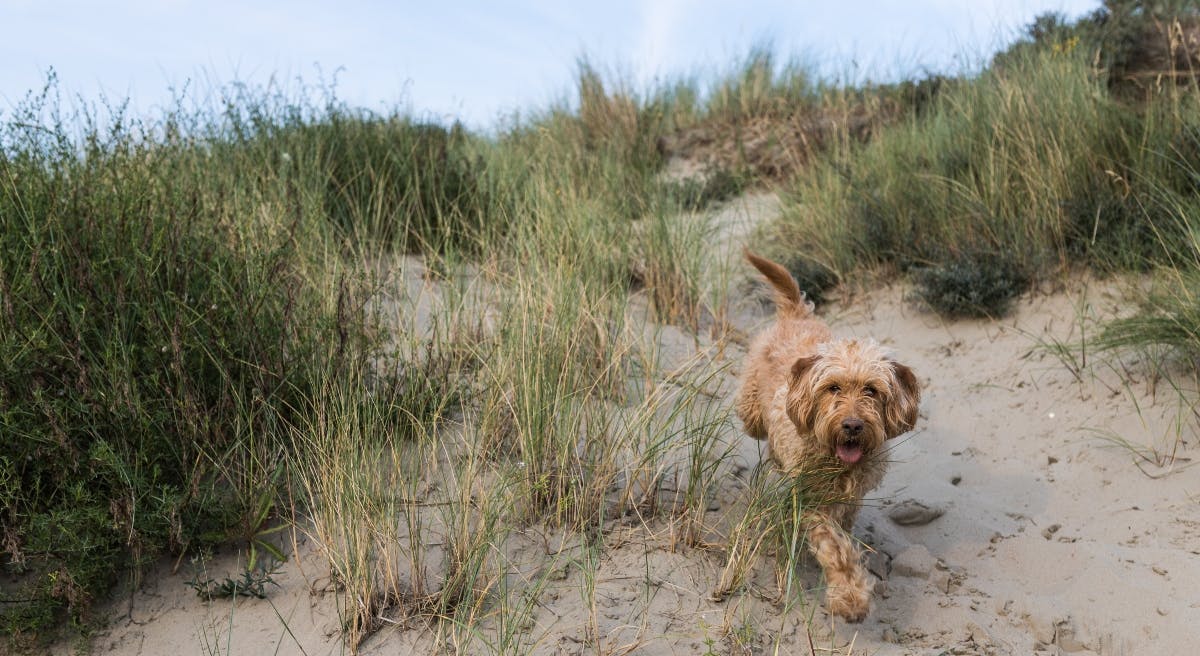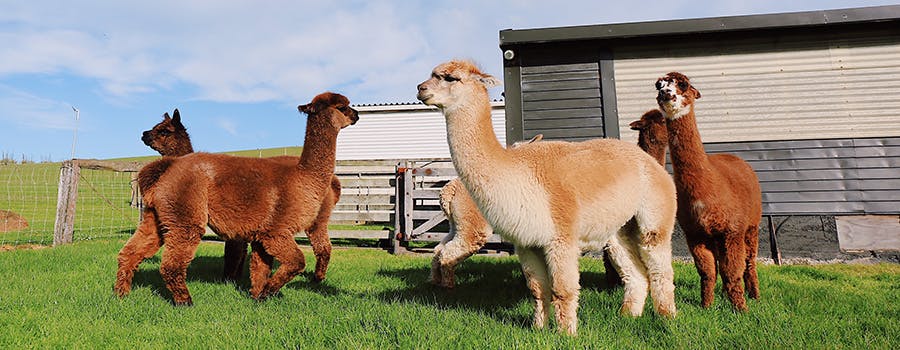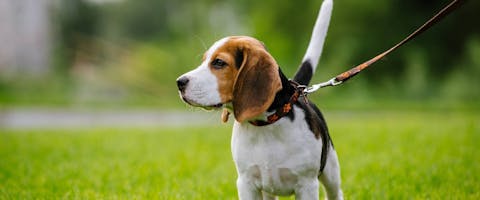Updated 18th August 2025
Want to learn how to leash train a dog? Having your dog leash-trained is an essential part of their training journey, and is especially helpful to get sorted before you welcome a pet sitter.
To get started, explore our top tips on leash training a puppy below, including advice on canine leash training from certified master dog trainer, Rob Kuty.
Help your dog like their walking equipment
Before learning how to train a dog to walk on a leash, the first thing you’ll need to do is to train your dog to enjoy being around their walking equipment.
- Reward your dog when getting out your walking equipment, and at each stage of putting it on. Attach the leash and share a treat, and so on.
- Train your dog to like their leash in a quiet, distraction-free zone for the best results.
Practice walking indoors first
When learning how to train a puppy to walk on a leash, begin your leash training indoors.
- A distraction-free zone allows your dog to focus on the task at hand without any cats to contend with or traffic to ignore.
- Learning the new skill, adapting to the conditioning and getting used to the feeling of the leash will be more than enough stimulation for your new dog.
Use positive reinforcement
When learning how to leash train a dog, you’ll need to adopt a positive reinforcement-based approach by rewarding your dog with treats.
- Reward your dog with a small treat each time they walk by your side or stop when you do.
- If you’d rather not feed your dog a treat every time, use a clicker or verbal praise.
- Reward your dog immediately so they can associate the right behaviors with praise.
- Positive signals help your dog to know when they’re performing well which will lead to repeated good behavior.
- Pick one method for your positive signal, stick to it, and provide a reward as soon as your dog has performed it.
Trending posts
Purr-use some of the top blogs our members have been loving this month- Top male dog names for your new furry friendGot a new furry family member in your pack? Check…

- Top female dog names for your new fluffy palWelcoming a new pooch into your family? Explore…

- 250+ gray cat names your silver feline will loveRecently welcomed a fluffy gray bundle of joy into…

- What are normal pet sitting rates?Discover the average pet sitting rates for animals…

- Unique dog names to stand out from the packDare to be different with our list of the best…

Walk backwards
Take a few steps backwards in the early stages of leash training to discourage your dog from lunging forward.
- Taking a few steps back rather than forwards in the early stages of leash training a puppy can be a great way to start.
- To discourage your dog from lurching forwards and to instead follow your direction of movement, take a few steps backwards, praising the behavior as soon as your dog has followed you.
- As they get better at following you, increase the steps you take and change direction for a challenge, rewarding them at every stage of success.
Keep the first outdoor walks short
To avoid overwhelming your new dog (and to maximize your training efforts), keep the first few walks short.
- Slowly build up the length of your outdoor walks as they get used to responding to your cues.
- Puppies have a short attention span, so it’s going to be more efficient for your training program to keep walks and training sessions short.
- Dogs can easily become mentally exhausted, so it’s important to teach new skills in short bursts - this is sure to have the most impact on your dog’s conditioning over hours of constant training.
If your dog pulls, stop walking
Don’t tolerate pulling - it’ll take patience and might feel repetitive at the start, but it’s a vital part of your leash training journey.
- When your dog pulls, stop walking, call your dog back to you (or use your chosen cue or get their attention with a treat) to lure them back to your side.
- Once they’re back where they need to be, take a few steps with loose-leash walking and reward them afterwards.
- Avoid rewarding as soon as they arrive back to you, as this can reinforce the idea that they’re given a treat after pulling.
If your dog lunges, distract them
Redirect your dog’s attention if they lunge at a distraction - this will help them to understand that you’re more interesting.
- Usually, dogs will lunge when they’re distracted by something, like another dog, traffic or small animal.
- Learn your dog’s triggers and redirect their attention before they have the chance to lunge, widening the space between your dog and the target.
- Once they come back to you and walk alongside you again, reward them with a treat.
- You’re likely to experience your dog lunging every now and then, especially as you’re learning how to leash train a puppy.
Don’t get your dog over-excited before a walk
Keep your dog calm before walks to avoid unwanted behaviors.
- Resist the urge to shout ‘walkies’ in a high-pitched voice or encourage zoomies before a walk.
- Hyping your dog up too much can result in a pent-up energy that can cause less than ideal behavior once you’re on the walk.
Over on our community forum, our member Becca was after ways to get a dog to heel rather than pulling - and Rob Kuty - certified master dog trainer, President of San Diego Pet Training and Director of Animal Training at Helen Woodward Animal Center - was on hand to help.
@becca asks “Any tips for getting a dog to walk to heel rather than pulling? I’ve done a number of sits where dogs either haven’t been taught to walk nicely alongside, or are just more used to being off-lead and seem to have forgotten anything they might have learnt!”
Rob: "Don’t stop and interact with other people and dogs as your dog will entice your dog to pull. Also be aware of your leash tension before trying to accomplish a heel.
Don’t worry if the dog is a little ahead of you, behind you, left or right of you as long as the leash is loose. Once you can start to accomplish this on a day-to-day basis, then you can start to tap your leg and associate a closer walk next to your ‘heel’."
Practice recall
Teach your dog to come back when called alongside leash training - this will get your dog used to following your commands and come in handy on walks.
- Ensure your dog is wearing their collar or harness, then sound a cue noise, and provide a reward when they come to you and walk a few paces (a retractable leash can be handy for this).
- Repeat this process gradually, and stop when your dog is eager to learn, not when they’re burnt out by all the training.
- Practice recall at home first, and venture to the dog park once you’re more confident your dog will come back.
- Helping your dog learn to come back when you call their name (or sound cue noises) will help them to make the right decision for themselves.
Puppy leash training FAQs
When do puppies start walking?
If you’ve ever spent time with a puppy, you’ll know they’re curious little creatures - a trait that encourages them to get moving. At around three weeks old, your pup will be standing. By around four weeks old, they’ll be walking.
When can I take my puppy for a walk?
Around two weeks after they’re fully vaccinated, you can show your new pup the outside world with a little walk. When it comes to dog walking training, start inside to get them used to the new equipment in a distraction-free environment, slowly building up to walkies outside and increasing the distance.
Useful resources
- 10 dog training hand signals & vet-approved tips for mastery
- Best dog training apps of 2025: pricing & key benefits
- 10 good dog training books on behavior and training
- Puppy training for beginners: how to train a puppy
- Top 10 must-have dog training tools
- 14 reasons dogs are the best pets: benefits of having a dog

